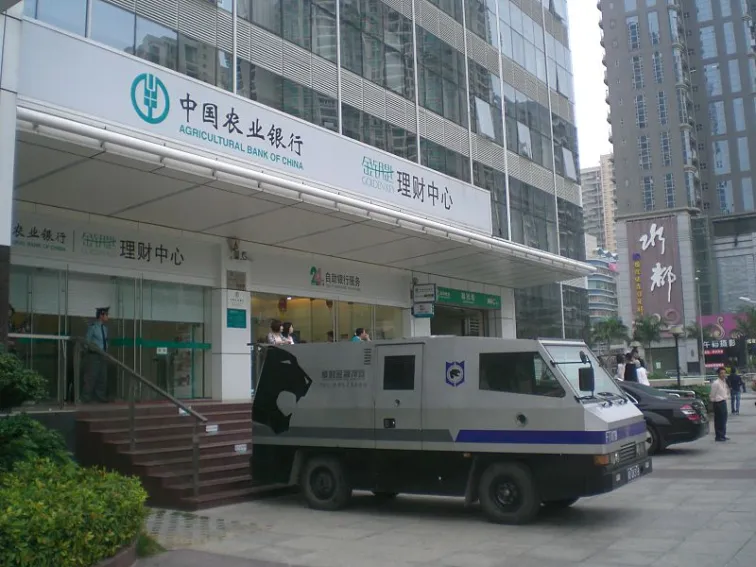
Agricultural Bank of China records highest profit growth among big 4 banks
Net profit in 1H13 was RMB92.4b.
Barclays' key takeaways from ABC's 1H13 results are:
- Takeaway 1: 1H13 net profit of RMB 92.4bn (+14.7% y/y) was 3% and 2% ahead our expectation (RMB 89.7bn) and Bloomberg consensus (RMB 90.6bn), likely the highest profit growth among big 4 banks.
- Takeaway 2: Sequential NIM weakened by another 12bps to 2.66% in 2Q13 after 3bps drop in 1Q13, mainly due to continued loan/deposit repricing after the rate cuts in 2012.
- Takeaway 3: Asset quality stable, with small increase in NPLs (+1.2% in 2Q) and slight drop in NPL ratio (-2bps in 2Q). Credit charge lowered to 57bps (vs. 75bps in 1Q13), the lowest quarter since ABC’s IPO, helped boosting the bottom line.
- Takeaway 4: Mortgages remain a key strategic focus for the bank’s loan book expansion, >95% of which is to first home buyers with average LTV at only 40%. Non-standard credit assets (NSCA) proportion accounted for 32% of total wealth management products (WMP) at end-1H13, below the regulatory ceiling.
Here's more from Barclays:
Slight deposit drop in 2Q as the bank shift to focus on the quality; loan growth more stable
Total deposits at end-1H13 amounted to RMB 11.5tn, -1.1% in 2Q13 (vs. +6.9% in 1Q13), or +5.7% in 1H13, mainly due drop in demand deposits (-3.8% in 2Q13). Total loans growth slightly slowed to 2.6% in 2Q13 (vs. +5.2% in 1Q13) or 8% in 1H13, mainly driven by mortgages (+13.2% in 1H13), overseas loans (+37% in 1H13) and discounted bills (+48.7% in 1H13).
Management expresses the view that mortgages remain a key strategic focus for the bank’s loan book expansion, also a key item to optimize its asset/capital allocation. According to the management, currently, >95% of its mortgage book is to first home buyers, and LTV ratio is only 40%.
Sequential NIM contraction of 12bps in 2Q13
On our calculations, ABC’s NIM further declined by 12bps to 2.66% in 2Q13 (vs. -3bps q/q in 1Q13), mainly due to continued loan/deposit repricing after the rate cuts in 2012, despite a small positive impact from the interbank rate spike in late June (as ABC was a net lender during the event).
On an h/h basis, the bank’s loan pricing continued to decline (-31bps h/h in 1H13 vs. -22bps h/h in 2H12), mainly driven by lower short-term corporate loan yield (-49bps h/h) and personal loan yield (-38bps h/h).
Interbank asset yield saw 70bps h/h increase in 1H13. Deposits cost also dropped (-8bps h/h in 1H13 vs. -5bps in 2H12), mainly due to falling corporate time deposit costs (-37bps h/h) and lower personal time deposit costs (-8bps h/h), despite slightly higher personal demand deposit costs (+1bp h/h). The average interbank funding costs were only up by 2bps h/h in 1H13, implying ABC’s strong liquidity position.
Management expects NIM to continue under moderate pressure in 2H13.
Better fee income growth
Net fee income reached RMB 47.6bn in 1H13, up by 22% y/y (or +22% y/y in 2Q13), mainly driven by agency commission fee (+29% y/y), consultancy and advisory fees (+13% y/y) and settlement fees (+22% y/y), while settlement fees were reduced by 13% y/y. Net fee income as a percentage of total revenue rose to 20.1% in 1H13 from 18.5% in 1H12.
Management attributes the strong fee income growth to: 1) low base in 1H12 after the tightened regulations; 2) strong momentum from RMB settlement business and bacassurance business; 3) new businesses like investment banking and wealth management.
Shrinking LGFV loan exposure
The bank’s LGFV loan reduced by RMB 32.5bn ytd (or -8.2%) to RMB 363.4bn as of end-1H13, accounting for 5.2% of total loans (-1.6ppts ytd). NPL ratio also declined, by 19bps in 1H13 to 0.55% as of end-June 2013. Provision to total loan ratio was high, at 5.5%. Management expect the bank’s LGFV loan exposure to continue to decline in 2H13.
Fast expanded WMPs; 32% in NSCA
The outstanding balance of ABC’s WMPs stood at RMB 717.8bn (+53.6% ytd) at end-1H13. In terms of underlying investment, non-standardized credit assets (NSCAs) amounted to RMB229.7bn as of end-1H13 (32% of WMP balance or 2% of total assets at end-2012), below the regulatory ceiling.




![Lorem Ipsum [ABF 1]](https://cmg-qa.s3.ap-southeast-1.amazonaws.com/s3fs-public/styles/exclusive_featured_article/public/2025-03/a_hand_pointing_to_a_futuristic_technology_5b87c9d0e3_1.png.webp?itok=2w0y1WhS)


![Cross Domain [Manu + SBR + ABF + ABR + FMCG + HBR + ]](https://cmg-qa.s3.ap-southeast-1.amazonaws.com/s3fs-public/styles/exclusive_featured_article/public/2025-01/earth-3537401_1920_4.jpg.webp?itok=WaRpTJwE)







 Advertise
Advertise

